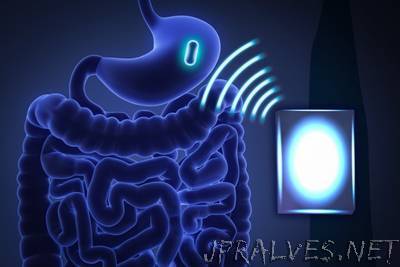
“Researchers at MIT, Brigham and Women’s Hospital, and the Charles Stark Draper Laboratory have devised a way to wirelessly power small electronic devices that can linger in the digestive tract indefinitely after being swallowed. Such devices could be used to sense conditions in the gastrointestinal tract, or carry small reservoirs of drugs to be delivered over an extended period. Finding a safe and efficient power source is a critical step in the development of such ingestible electronic devices, says Giovanni Traverso, a research affiliate at MIT’s Koch Institute for Integrative Cancer Research and a gastroenterologist and biomedical engineer at Brigham and Women’s Hospital.”
